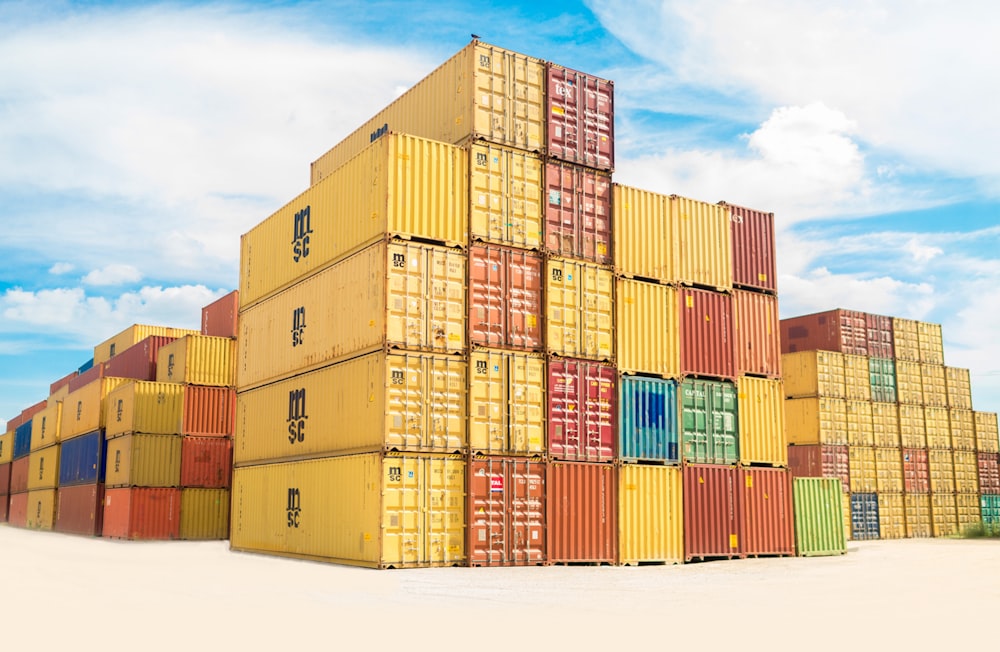Trong phần 3 trong chuỗi dạng bài TRUE/FALSE/NOT GIVEN hãy cùng dành ra khoảng 10 phút và cùng luyện tập nhé! Chúc bạn học tốt
READING PASSAGE 2
DELIVERING THE GOODS
The vast expansion in international trade owes much to a revolution in the business of moving freight
A
International trade is growing at a startling pace. While the global economy has been expanding at a bit over 3% a year, the volume of trade has been rising at a compound annual rate of about twice that. Foreign products, from meat to machinery, play a more important role in almost every economy in the world, and foreign markets ow tempt businesses that never much worried about sales beyond their nation’s borders
B
What lies behind this explosion in international commerce? The general worldwide decline in trade barriers, such as customs duties and import quotas, is surely one explanation. The economic opening of countries that have traditionally been minor players is another. But one force behind the import-export boom has passed all but unnoticed: the rapidly falling cost of getting goods to market. Theoretically, in the world of trade, shipping costs do not matter. Goods, once they have been made, are assumed to move instantly and at no cost from place to place. The real world, however, is full of frictions. Cheap labour may make Chinese clothing competitive in America, but if delays in shipment tie up working capital and cause winter coats to arrive in spring, trade may lose its advantages
C
At the turn of the 20th century, agriculture and manufacturing were the two most important sectors almost everywhere, accounting for about 70% of total output in Germany, Italy and France, and 40-50% in America, Britain and Japan. International commerce was therefore dominated by raw materials, such as wheat, wood and iron one, or processed commodities, such as meat and steel. But these sorts of products are heavy and bulky and the cost of transporting them relatively high
D
Countries still trade disproportionately with their geographic neighbours. Over time, however, world output has shifted into goods whose worth is unrelated to their size and weight. Today, it is finished manufactured products that dominate the flow of trade, and, thanks to technological advances such as lightweight components, manufactured goods themselves have tended to become lighter and less bulky. As a result, less transportation is required for every dollar’s worth of imports or exports
E
To see how this influences trade, consider the business of making disk drives for computers. Most of the world’s disk-drive manufacturing is concentrated in South-east Asia. This is possible only because disk drivers, while valuable, are small and light and so cost little to ship. Computer manufactures in Japan or Texas will not face hugely bigger freight bills if they import drives from Singapore rather than purchasing them on the domestic market. Distance therefore poses no obstacle to the globalisation of the disk-drive industry
F
This is even more true of the fast-growing information industries. Films and compact discs cost little to transport, even by aeroplane. Computer software can be ‘exported’ without ever loading it onto a ship, simply by transmitting it over telephone lines from one country to another, so freight rates and cargo-handling schedules become insignificant factors in deciding where to make the product. Businesses can locate based on other considerations, such as the availability of labour, while worrying less about the cost of delivering their output
G
In many countries, deregulation has helped to drive the process along. But, behind the scenes, a series of technological innovations known broadly as containerisation and inter-modal transportation has led to swift productivity improvements in cargo-handling. Forty years ago, the process of exporting or importing involved a great many stages of handling, which risked portions of the shipment being damaged or stolen along the way. The invention of the container crane made it possible to load and unload containers without capsizing the ship and the adoption of standard container sizes allowed almost any box to be transported on any ship. By 1967, dual-purpose ships, carrying loose cargo in the hold and containers on the deck, were giving way to all-container vessels that moved thousands of boxes at a time
H
The shipping container transformed ocean shipping into a highly efficient, intensely competitive business. But getting the cargo to and from the dock was a different story. National governments, by and large, kept a much firmer hand on truck and railroad tariffs than on charges for ocean freight. This started changing, however, in the mid-1970s, when America began to deregulate its transportation industry. First airlines, then road hauliers and railways, were freed from restrictions on what they could carry, where they could haul it and what price they could charge. Big productivity gains resulted. Between 1985 and 1996, for example, America’s freight railways dramatically reduced their employment, trackage, and their fleets of locomotives – while increasing the amount of cargo they hauled. Europe’s railways have also shown marked, albeit smaller, productivity improvements
I
In America, the period of huge productivity gains in transportation may be almost over, but in most countries, the process still has far to go. State ownership of railways and airlines, regulation of freight rates and toleration of anti-competitive practices, such as cargo-handling monopolies, all keep the cost of shipping unnecessarily high and deter international trade. Bringing these barriers down would help the world’s economies grown even closer
Question 1-5
Do the following statements agree with the information given in Reading Passage 2?
In boxes 1-5 on your answer sheet, write
TRUE if the statement agrees with the information
FALSE if the statement contradicts the information
NOT GIVEN if there is no information on this
1 International trade is increasing at a greater rate than the world economy
2 Cheap labour guarantees effective trade conditions
3 Japan imports more meat and steel than France
4 Most countries continue to prefer to trade with nearby nations
5 Small computer components are manufactured in Germany
Nguồn: Cambridge ielts 6
ĐÁP ÁN
1 TRUE
2 FALSE
3 NOT GIVEN
4 TRUE
5 NOT GIVEN
GIẢI THÍCH
1 Bạn có thể thấy đáp án trong câu ‘ While the global economy has been expanding at a bit over 3% a year, the volume of trade has been rising at a compound annual rate of about twice that’
2 Bạn có thể thấy đáp án trong câu ‘ Cheap labour may make Chinese clothing competitive in America, but if delays in shipment tie up working capital and cause winter coats to arrive in spring, trade may lose its advantages’
3 Qua Skim và Scan bạn có thể thấy thông tin không xuất hiện trong bài
4 Bạn có thể thấy đáp án trong câu ‘ Countries still trade disproportionately with their geographic neighbours.’
5 Qua Skim và Scan bạn có thể thấy thông tin không xuất hiện trong bài
HIGHLIGHT VOCAB:
- Freight /freɪt/ hàng hóa chuyên chở, chuyên chở
- Startling pace /ˈstɑːtlɪŋ peɪs/ bước tiến đáng kinh ngạc
- Compound /ˈkɒmpaʊnd/ hợp chất, pha trộn
- Border /ˈbɔːdə(r)/: biên giới
- Explosion /ɪkˈspləʊʒn/ sự bùng nổ
- Customs duties /ˈkʌstəmz/ : thuế hải quan
- Import quotas: /ˈkwəʊtə/ hạn ngạch nhập khẩu
- Decline /dɪˈklaɪn/ từ chối, suy giảm
- Boom /buːm/ sự tăng vọt (dân số), phát triển thịnh vượng
- Theoretically /ˌθɪəˈretɪkli/ về mặt lý thuyết
- Frictions /ˈfrɪkʃn/ sự ma sát, bất đồng ý kiến
- Tie up: sự tắc nghẽn, sự liên kết
- Agriculture /ˈæɡrɪkʌltʃə(r)/ nông nghiệp
- Dominate /ˈdɒmɪneɪt/thống trị, trội hơn
- Bulky /ˈbʌlki/: cồng kềnh
- Disproportionately /ˌdɪsprəˈpɔːʃənətli/: không cân xứng, không cân đối
- Geographic /ˌdʒiːəˈɡræfɪkl/: thuộc địa lý
- Component /kəmˈpəʊnənt/thành phần, bộ phận cấu thành
- Disk drive / ˈdɪsk draɪv/: ổ đĩa
- Concentrated /ˈkɒnsntreɪtɪd/: tập trung, cô đặc
- Freight bills: giấy kê vận phí
- Domestic market: thị trường nội địa
- Obstacle /ˈɒbstəkl/: chướng ngại, vật cản trở
- Globalisation /ˌɡləʊbəlaɪˈzeɪʃn/: toàn cầu hóa
- Aeroplane /ˈeərəpleɪn/máy bay, phi cơ
- Transmit /trænzˈmɪt/truyền
- Cargo /ˈkɑːɡəʊ/chuyến hàng chở bằng tàu thủy, máy bay
- Insignificant /ˌɪnsɪɡˈnɪfɪkənt/: không đáng kể, tầm thường
- Deregulation / ˌdiːˌreɡjuˈleɪʃn/: sự điều chỉnh quy định
- Containerisation /kənˌteɪnəraɪˈzeɪʃn/: sự đóng hàng vào công ten nơ











